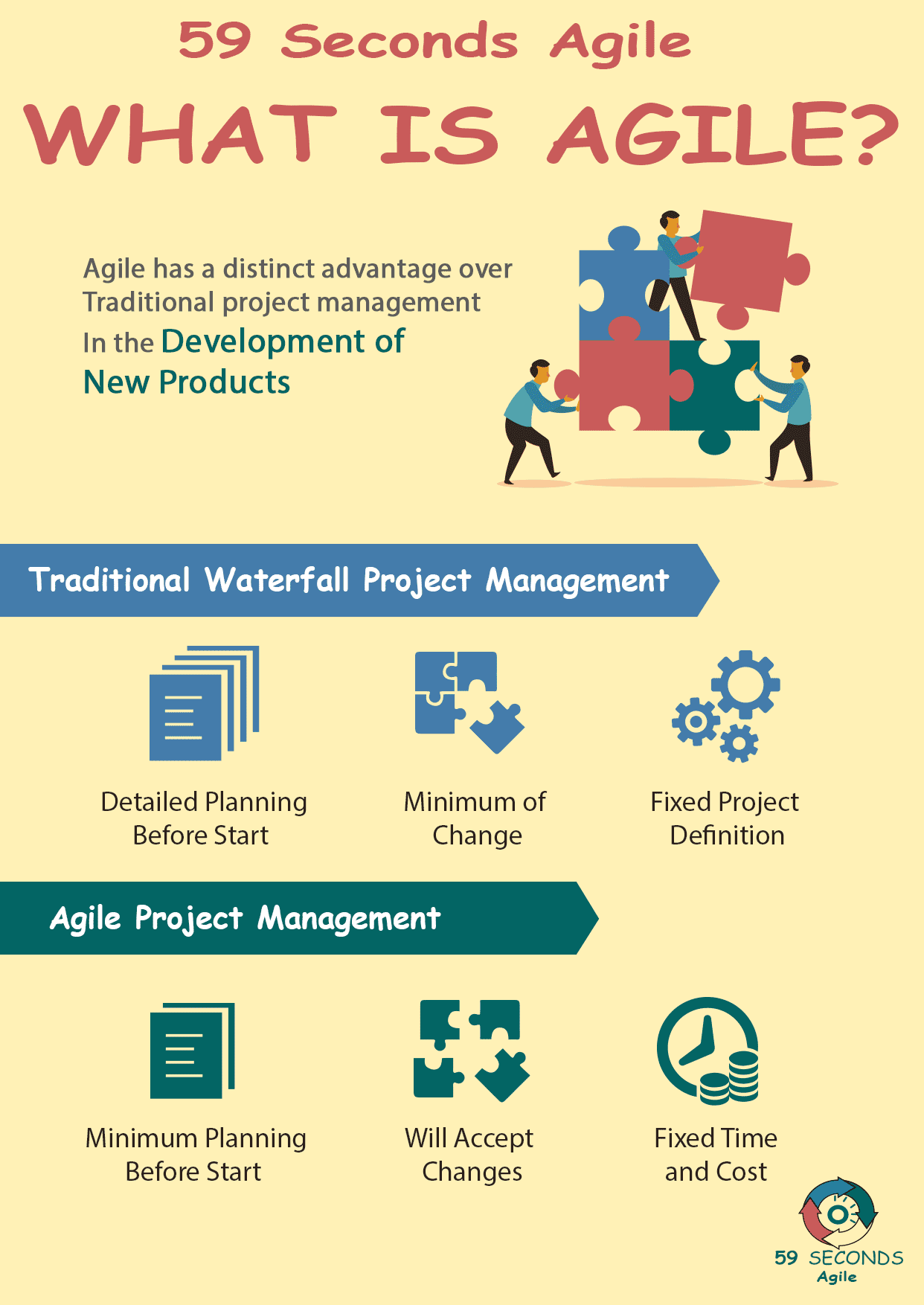What is Agile Development and why use Agile Scrum? This article takes a look into what is Agile Development and the benefits of using Agile Scrum.
Why Use Agile Scrum?
A 59 Seconds Agile Video Animation
Why use Agile Scrum for Developers?
A 59 Seconds Agile Article
In this article, we discuss Agile values and principles in comparison to the traditional model in software development and changes involved in switching from Traditional to Agile as a developer. Using PESTLE analysis, we discuss the choice between two approaches. The usage of Agile approach in non-technology projects is also investigated.
The traditional model is used for software development including sequential phases of Analysis, Design, Code, and Test. With the requirement of reduced time to market, flexibility in adapting to changing markets and transparent working for software products, the Agile approach was developed to answer these needs. The Agile model has the same steps, but these steps are not executed sequentially and linearly. In the Agile model, the process is iterative and at each stage, there is a feedback loop in the case of the need for change. In the traditional model, a clear and exact definition is available from the beginning of the project. But in the Agile approach, the initial definition is raw and the design is not well-defined in the early stages of the project.
Why use Agile Scrum: The Differences
Once a step is completed, the developer can’t go back to the previous step in the traditional model, but developers can go back and make changes in the Agile approach. Once the specification of the project is finalized, customers can’t change the project scope during the work in the traditional model, but in Agile practice, the customers can change the project scope during the project. Another point of difference is the product delivery. The customer needs to wait for the product until the end of the project in the traditional model, but Agile practice is based on early and incremental releases of the product. Based on the requirements and specifications of different projects, Agile, traditional or a combination of two may be most suitable.
Why use Agile Scrum: The Change Overhead
Any change in the management of the software development process involves a lot of challenges and overheads. New concepts of working are introduced. New roles such as scrum master and product owner with new responsibilities are needed to be defined and the work principles are changed. People engaged in the projects may resist the new changes. From the developers’ viewpoint, to have a soft transition from traditional to Agile model, the developers should be trained about the new concepts in Agile principles and Agile manifesto. As the Agile model is based on collaborative working, the development team should work on their communication skills. Sprint planning, stand-up meetings, and retrospective meetings provide the opportunity for the collaborative working of the developers.
Collocation of the development team eases with close and face to face communication. Another requirement in this transition is to automate the software development process and use automation tools by the development team. This facilitates the early and continuous delivery of product functionalities. It also helps the work progress monitoring by the product owner and scrum master.
However, like any change in an organization, the transition from traditional to Agile should be managed and all the changes should be documented. The stakeholders should also approve of this transition. The impact of the change on different organizational aspects such as human resources, collaboration with the customers, delivery time and quality of the work should be analyzed. By moving to Agile, the quality and value of the deliverables should be ensured.
Prev <— Continue Reading —> Next
Learn More: Initiating an Agile Project
User Stories Applied
A 59 Seconds Agile Book Review
User Stories Applied by Mike Cohn is one of our favourite books on Agile User Stories. The book starts with an overview into user stories, and details what a user story is and the different aspects of them. He then discusses how to go about writing a user story, and provides details of the INVEST criteria that can be used to determine if the story is meeting all of its objectives. Next Mike gives an in depth discussion of who user stories are written for and where to begin when gathering the details for them. The book then discusses acceptance testing user stories, including how to go about specifying these criteria and the responsibilities of the development team and customers during this process.
Prev <— Continue Reading —> Next
Learn More: Initiating an Agile Project
What is Agile Development?
A 59 Seconds Agile Infographic

Prev <— Continue Reading —> Next
Learn More: Initiating an Agile Project
Our Favourite Agile Books
We found these books great for finding out more information on Agile Scrum:
